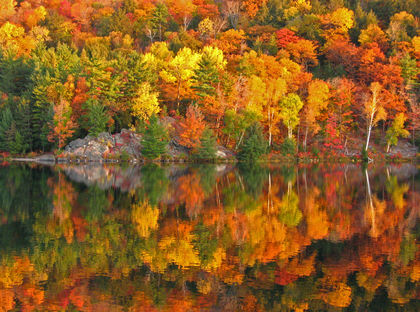Canada - Flora and fauna

A great range of plant and animal life characterizes the vast area of Canada, with its varied geographic and climatic zones. The flora of the Great Lakes–St. Lawrence region resembles that of the adjacent US section, with white pine, hemlock, sugar and red maples, yellow birch, and beech trees. Coniferous trees—particularly red spruce—predominate in the Maritime region, black spruce in the eastern Laurentian zone, white spruce in the western. In the east are also found the balsam fir, white cedar, tamarack, white birch, and aspen, with jack pine in the drier areas. From the prairie grassland to the Arctic tundra there are aspen, bur oak, balm of Gilead, cottonwood, balsam poplar, white birch, and other deciduous trees. Conifers dominate the northern section. Many types of grasses grow on the interior plains. The wet area along the west coast is famous for its tall, hard conifers: western hemlock and red cedar, Douglas fir, Sitka spruce, and western white pine. Subalpine forests cover the Rocky Mountain area, where there are such conifers as alpine fir, Engelmann spruce, lodgepole pine and aspen, and mountain hemlock. The great Arctic region is covered with low-growing grasses, mosses, and bushes.
The fauna of the Great Lakes–St. Lawrence region includes deer, black bear, opossum, gray and red squirrels, otter, beaver, and skunk; birds include eastern bluebird, red-winged blackbird, robin, wood thrush, woodpecker, oriole, bobolink, crow, hawk, bittern, heron, black duck, and loon. In the boreal forest area there are moose, caribou, black bear, lynx, timber wolf, marten, beaver, porcupine, snowshoe rabbit, red squirrel, and chipmunk. Typical mammals of the Rocky Mountain area are grizzly bear, mountain goat, moose, wapiti, cougar, and alpine flying squirrel. In the plains are rabbits, gophers, prairie birds, and waterfowl. Abundant on the west coast are deer, Cascade mountain goat, red squirrel, mountain beaver, various species of mice, and Puget striped skunk; common birds include northern Pigmy-owl, band-tailed pigeon, black swift, northern flicker, crow, rufous-sided towhee, and black brant. Over the stretches of the Arctic are the musk ox and reindeer, polar bear, caribou, white and blue fox, arctic hare, and lemming, as well as the snowy owl, ptarmigan, snow bunting, arctic tern, and other birds. Walrus, seals, and whales inhabit Canada's coastal waters.